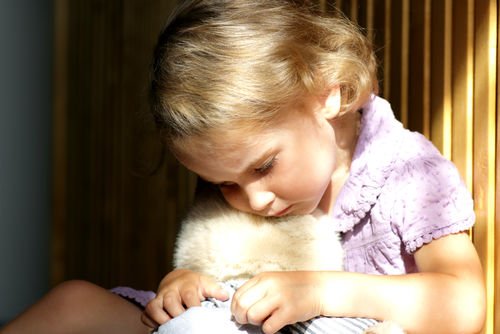Parents and educational staff jointly support the transition. The child’s entry into kindergarten offers a variety of opportunities to develop holistic competencies and to involve the child and his family in the education system. However, these advantages can only be used extensively if the first steps are successful and the transition from family to daycare is perceived by the child as successful.

The kindergarten is usually the first transition of a person to a non-family institution. Like every transition, this is also characterized by significant challenges on an individual, interactional and contextual level for the individuals involved. The child is faced with strong fear of separation and loss and also has to get used to an unknown environment with new contacts and caregivers and a changed daily routine. His parents also have to deal with strong emotions, are confronted with changed daily structures, new roles and requirements as well as changed social contacts.
The educational specialist is also heavily involved in this transition. For them, however, the entry of a child into kindergarten is not a comparable transition, since the situation generally does not make any new demands on them (see Griebel & Drizzle 2005). While the child and his parents represent the actors in this transitional situation and have to cope with them actively, the educational specialist acts as a moderator and guide in the new and unknown environment.
Parent-child relationship as decisive >If one to three-year-olds have no previous experience with separation situations when they enter kindergarten, they do not have sufficiently developed strategies to successfully master the required adaptation processes (cf.Laewen et al. 2009). They rely on the support of their primary caregivers (parents).
Parents provide the child with a secure basis. The material and personal world are appropriated from there. If the child feels safe and secure, they can turn to exploring their surroundings, develop skills and abilities and expand their knowledge horizon and establish new relationships. However, if the child cannot fall back on its secure basis in new and unsettling situations, it is very difficult for the child to calm down and open up to the as yet unmanageable circumstances and unknown people (bond exploration balance). It is therefore essential that parents are present in kindergarten while their child is settling in. In the presence of their trusted caregiver and the resulting sense of security, the child can develop a relationship with the educational specialist and the other children in a relaxed atmosphere and explore the new environment.
The Berlin crib model is also based on knowledge of attachment theory (cf.Laewen et al. 2009). The familiarization program takes into account the involvement of the child, the caregiver (parents) and the educator equally during the transition from family to daycare. The well-known caregiver accompanies the child regularly in the unknown environment for the first few days and gives him security to explore the new environment. Only when the child begins to use the pedagogical specialist as a safe basis for his actions and to be comforted by it, is the acclimatization process considered complete.
This process is not the same for all children. Influencing factors are e.g. the temperament / the indiv />
The quality of the relationship is influenced by interaction processes between the child and his mother / father. In the context of an educational partnership during the acclimatization period, the promotion of parent-child interaction alongside the establishment of a personal relationship with the child and his parents is an essential task of the educational specialist (Fig. 1).
Support for parent-child interaction within the framework of an educational partnership
In building relationships with the new child, the pedagogical specialist faces a double challenge. On the one hand, it must be perceived by the child and his parents as a caregiver and accepted as such. On the other hand, and this is the precondition for the success of the first mentioned, it has to be sensitive to the parents’ interaction behavior in the foreign situation your child making an effort.
The requirements for parents during the settling-in period are clearly defined by the Berlin crib model: "The parents should be passive in the group room, do not push their child away from them and always accept it when the child is looking for them" (Laewen et al. 2007, p. 50). Under these conditions, the child can use the parents as a safe base during the exploration and return to them again and again in the event of uncertainty. However, these demands include concrete interaction behavior, which the caregiver should take into account in order to offer the child sufficient security in the unknown environment.
In the following, concrete behaviors of adults are listed that support the establishment of a good relationship and a secure bond (see Friederich 2008).
"Passive behavior", as it is formulated as a requirement for the parents, they can quickly be interpreted as a withdrawal and physical turning away from the child. The child therefore feels left alone despite the presence of his caregiver and overwhelmed in the unknown situation. Only the passive physical presence of the parents is clearly not enough at this point. On the other hand, the caregiver signals to the child that he or she is aware of it and appreciates its (exploration) actions by means of an attentive posture, encouraging gestures and facial expressions. By keeping eye contact and a confident and encouraging smile from the parents, the child can always get feedback and confirmation of his behavior. They offer the child inner security and support to explore the strange situation.
The "Don’t push kid" moving away from the parents runs the risk of the caregiver starting to cling and giving the child the feeling of not being allowed to move away. In the transition period, parents, like their child, are facing major changes. They have to entrust their child to an unknown person, are afraid of loss and fear to be exchanged and replaced in their role as caregiver of the child.
Protection and security should be conveyed to the children through physical contact and language, but always with careful consideration of their needs. If the child independently seeks the closeness and protection of his or her caregiver in the event of being overwhelmed or insecure, it is the responsibility of the parents to empathize with their child’s feelings and to support them in a compassionate manner to deal with the conflict, for example through comforting words and genuine physical contact. However, parents also need to perceive when the child calms down and is ready to explore his environment again. The caregiver’s own needs during the separation situation should not be transferred to the child.
The pedagogical specialist requires a high level of competence to perceive interaction processes between parents and their child and, if necessary, to support the parents sensitively in the training or in the use of beneficial interaction behavior. An intensification of the parent-child interaction during the transition period makes it clear to the child that they can continue to rely on their parents and that the educator is just another caregiver and not the substitute mother. In order to accept this support from the specialist, parents first have to feel accepted and accepted by them with their feelings and fears. Only in this way can the pedagogical specialist be accepted as a parenting expert and as a trustworthy caregiver for your own child in a further step. Tensions and conflicts between the caregivers represent stressful situations for the child during the settling-in period. The child is insecure and distances himself from the unknown specialist. If the child cannot use the educator as a safe basis for his or her actions, the in-depth discussion of the environment and the acquisition also go further new Skills restricted. The acclimatization the child in kindergarten should therefore be seen as an educational partnership and not as a competition for the child. Together, it is the task of the parents and the pedagogical specialist to build a stable bridge between family and day care center, which gives the child the security and strength to face the new requirements and to grow with them. The transition for the child can only succeed if both systems pull together.
Conclusion
In order to make the transition from family to daycare easier for the child, the basis must be created on the part of the parents and the educational staff involved. Together, they must be a role model for the child and strive for an education that is free of competition and in partnership with measures that support interaction and promote relationships.
literature
Ainsworth, M. (2011): Mother-Child Bonding Patterns: Previous Events and Their Impact on Development. In: Grossmann, K. & Grossmann, K .: Attachment and Human Development: John Bowlby, Mary Ainsworth and the Foundations of Attachment Theory. 3rd ed. Stuttgart. Pp. 314-340.
Friedrich, H. (2008): Shaping relationships with children. 4th edition Berlin, Düsseldorf, Mannheim.
Griebel, W. & Niesel, R. (2005): Coping with transitions between family and educational institutions as a co-construction of everyone involved. In: Kindergarten pedagogy. Online manual. Transition from family to day care.
RELATED ITEMS
-

What if the child doesn’t want to go to daycare? Baby and family
Yesterday the child happily went to crèche or kindergarten, today there is protest and roar. What is behind it? Today: thumbs down for that…
-

Entry to kindergarten – a significant event for the family
Wilfried Griebel Renate Niesel Entry to kindergarten is a unique event not only for children, but also for parents…
-

Parenting: this is how parents stay consistent – baby and family
Now it’s enough! Sometimes children definitely go overboard. Educational advisor Ulrich Gerth explains how to do it, clear rules…
-

Families in poverty – childcare services
How kindergartens can react – Poverty as a family situation and a framework for growing up in a child has consequences for those affected as well…
